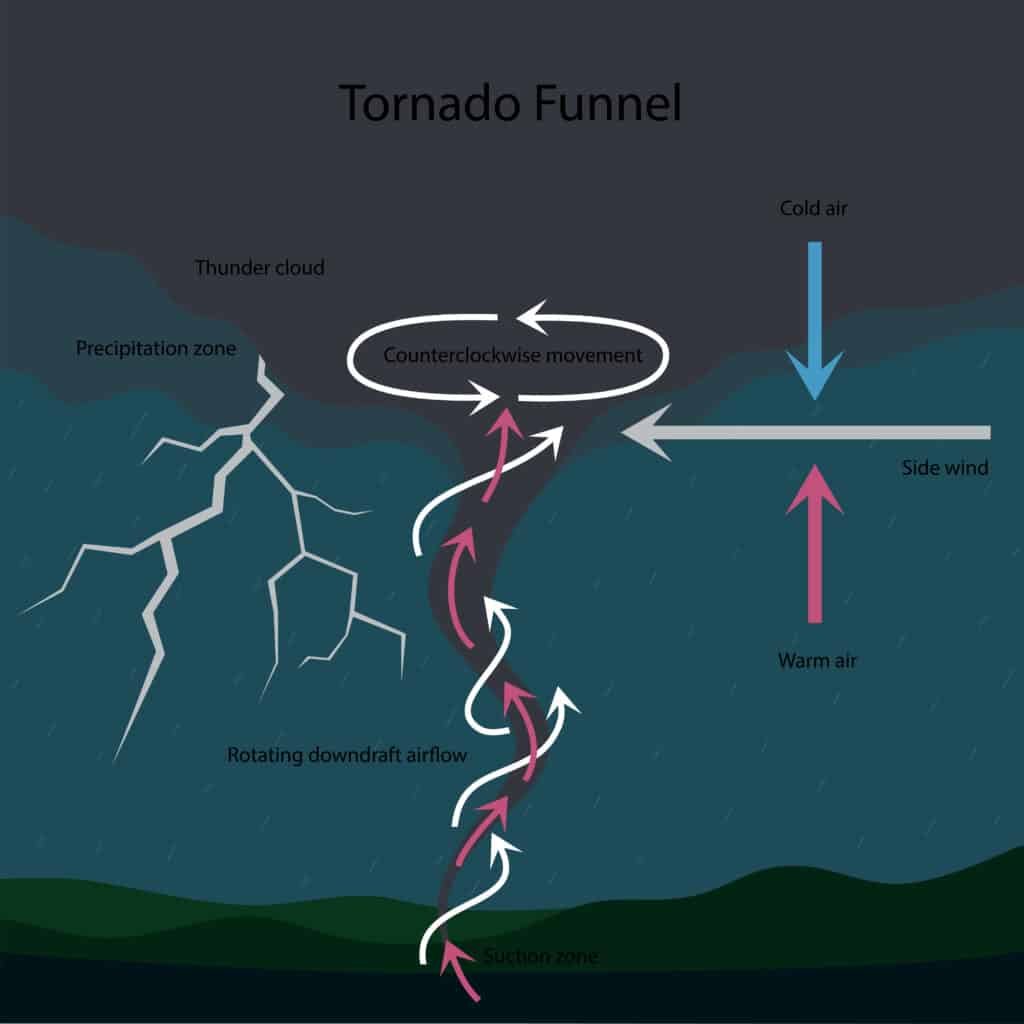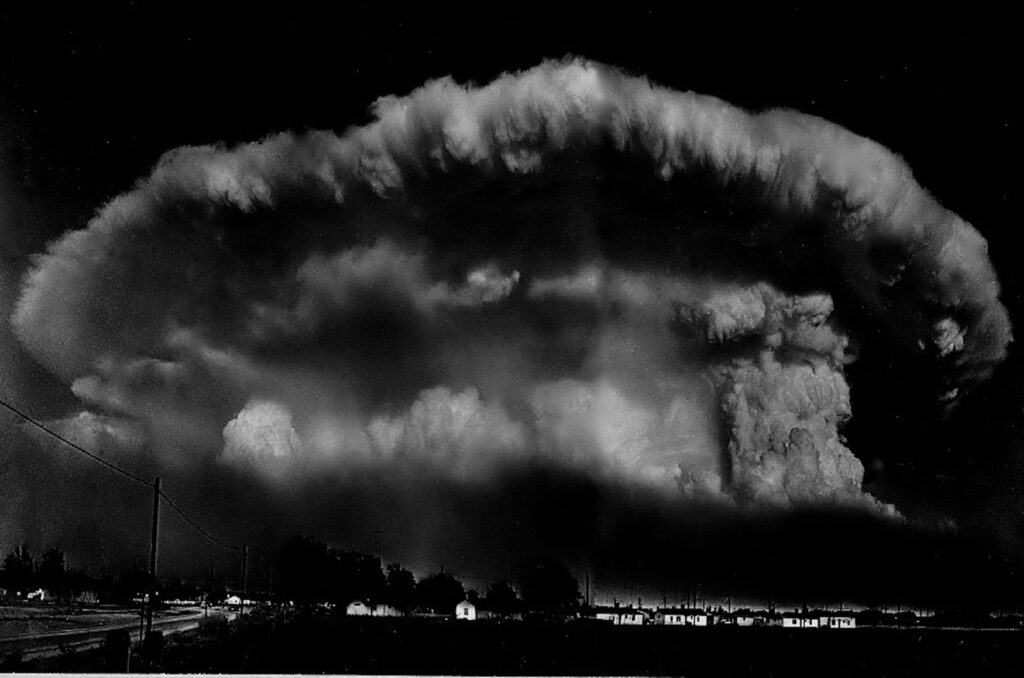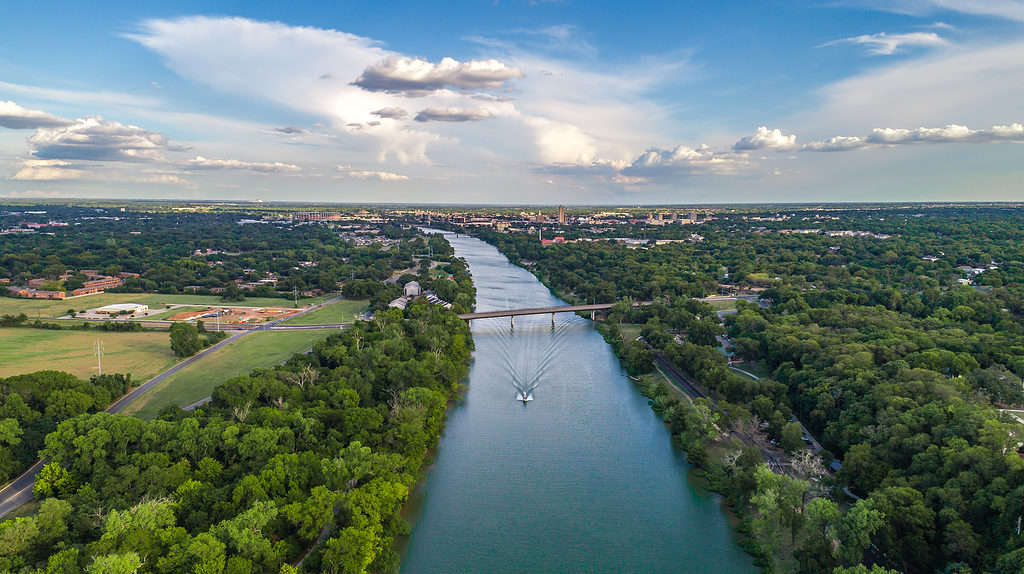Texas is a very large state with many cities, expansive rural areas, and all sorts of unique weather. Among the many types of weather phenomena that roll through the Lone Star State are tornados. Texas is firmly within Tornado Alley, and more tornadoes impact this state than any other. Unfortunately, these tornadoes can sometimes be incredibly destructive. Come find out about the most powerful tornado to ever rip through Texas and see how strong it was, when it struck, and more!
How Many Tornadoes Strike Texas Each Year?

Over 100 tornadoes strike Texas annually.
©Huntstyle/Shutterstock.com
Texas receives more tornadoes than any other state. On average, 132 confirmed tornadoes strike Texas every year. The state frequently has the perfect conditions for tornadoes to form. Despite having the most tornadoes in the entire country, relatively few people are killed by them. Several factors contribute to the low number of fatalities in the state, including:
- Many parts of Texas are rural and do not have large towns or cities.
- Tornadoes often strike in relatively empty parts of the state.
- Texans are educated about tornado preparedness and emergency procedures.
- Many homes in Texas are equipped with a safe place to stay in the event of a tornado warning.
These factors cut down on serious injuries and fatalities despite the state having more tornadoes than any other. They’re also why the most powerful tornado to ever rip through Texas did not cause a vast number of fatalities.
What Makes a Tornado Powerful?

Tornadoes form when warm, humid air collides with cold, dry air.
©Tsyntseus Anastasiia/Shutterstock.com
A few ways exist to consider a tornado’s overall power. Scientists can look at the wind speed, level of destruction, and overall size of a tornado. Generally, when people talk about how powerful a tornado was that struck an area, they refer to wind speed.
That’s why one of the formerly used scales to measure a tornado’s destructive power was the Fujita Scale, a scale between F0 and F5 that would rank a tornado’s destructiveness. Nowadays, the measurements have changed and included other factors in determining a tornado’s power.
Measuring a Tornado’s Power
Meteorologists began using the Enhanced Fujita Scale in February 2007. This new scale took into account things like the degree of damage done to an area and other damage indicators. That way, meteorologists could use extra context to categorize the tornado. The following wind speeds correlate to the Enhanced Fujita Scale.
| Enhanced Fujita Scale Level | Wind Velocity |
|---|---|
| EF0 | 65 to 85 mph |
| EF1 | 86 to 110 mph |
| EF2 | 111 to 135 mph |
| EF3 | 136 to 165 mph |
| EF4 | 166 to 200 mph |
| EF5 | Over 200 mph |
EF5 tornadoes are the most powerful ones, but they are also the rarest to strike Texas and every other part of the state. The worst tornadoes in Texas have all been rated EF4 or EF5, causing massive damage and loss of life.
What Was the Most Powerful Tornado to Strike Texas?

On May 11, 1970, a powerful multiple-vortex tornado hit parts of Lubbock, Texas, after dark. It killed 26 people and caused at least $135 million in damage.
©Lynn A. Nymeyer/Shutterstock.com
The most powerful tornado to ever hit Texas was the 1970 Lubbock tornado. This was an EF5 multi-vortex twister that struck at night. The reason it’s considered the most powerful tornado to strike Texas is that it had winds of 290 mph. That makes it one of the most powerful tornadoes ever recorded.
Two highly respected meteorologists surveyed the damage. They were Ted Fujita, the individual that made the original Fujita Scale, and Thomas P. Grazulis. At first, the tornado was designated an F6 tornado, meaning that it was nearly off the charts in terms of power. However, Fujita later reclassified the tornado as an F5 that had incredible power.
This was hardly an ordinary tornado. Not only did it generate incredibly powerful wind speed, but it was a gigantic twister. At its utmost, the tornado reached a width of 1.5 miles!
The tornado ripped through portions of Lubbock, damaging 9,000 homes, various commercial buildings, and more. The twister tracked for 8.5 miles for about half an hour before it dissipated. The tornado killed 26 people, injured hundreds more, and caused somewhere between $135 and $250 million in damage to the affected areas.
At the time this tornado struck, it was the most expensive tornado to ever strike, and it was also the westernmost F5 to ever strike in the U.S. Given the location where it struck, the damage and impact of this storm could have been worse. If the tornado had struck during the day, more people would have been in the affected places.
The Animals Impacted By the Most Powerful Tornado in Texas
Many animals lived in and around Waco during the time the tornado struck. They were undoubtedly affected by the powerful tornado that ripped through the area. Some of the wild animals and pets that would have lost their habitats, food sources, and lives include:
- Bats
- Alligators
- Raccoons
- Cats
- Dogs
- Western diamondback rattlesnakes
- Virginia Opossums
Without a place to hide, these animals would have been harmed by the wind, projectiles, and hail that accompanied the tornado. Other creatures would have lost their nests or food supplies in their area.
What Was the Deadliest Tornado in Texas History?

Waco was the site of the deadliest tornado in Texas.
©davisdeatonphotography/Shutterstock.com
The deadliest tornado in Texas history was the 1953 Waco Tornado, and it killed 114 people the day it struck the city. This twister is often recognized as being the deadliest one to hit Texas since 1900. While it was not the most powerful tornado to ever rip through Texas, the Waco tornado was still rated an F5. That means it packed winds of over 200 mph when it struck the city.
This tornado was also the first officially recorded F5 tornado to hit the U.S. Meteorologists will never know whether or not it was actually the first F5 to strike the country since it was settled.
The 1953 Waco Tornado was part of a larger outbreak that struck almost a dozen states between May 9, 1953, and May 11, 1953. The outbreak consisted of 33 tornadoes of carrying strength, with the Waco tornado being the worst tornado of them all.
Texas continues to get the most tornadoes out of any other state. The next closest state in terms of the average number of annual tornadoes is Mississippi. This state gets about 86 tornadoes each year. Some scientists are theorizing that the Tornado Alley is actually creeping to the east. That means states east of Texas will start to get more frequent and powerful tornadoes than ever before. People living in states like Mississippi, Alabama, Louisiana, and others farther north must learn how to live with these powerful forces of nature.
The photo featured at the top of this post is © Eugene R. Thieszen/Shutterstock.com
Thank you for reading! Have some feedback for us? Contact the AZ Animals editorial team.






